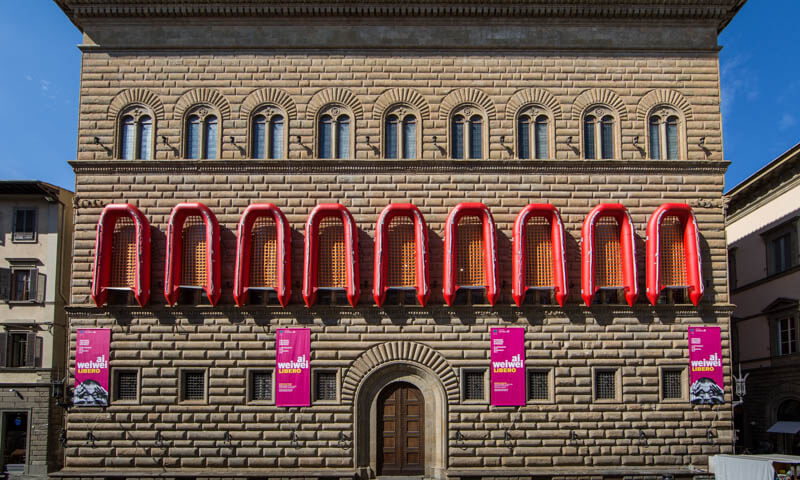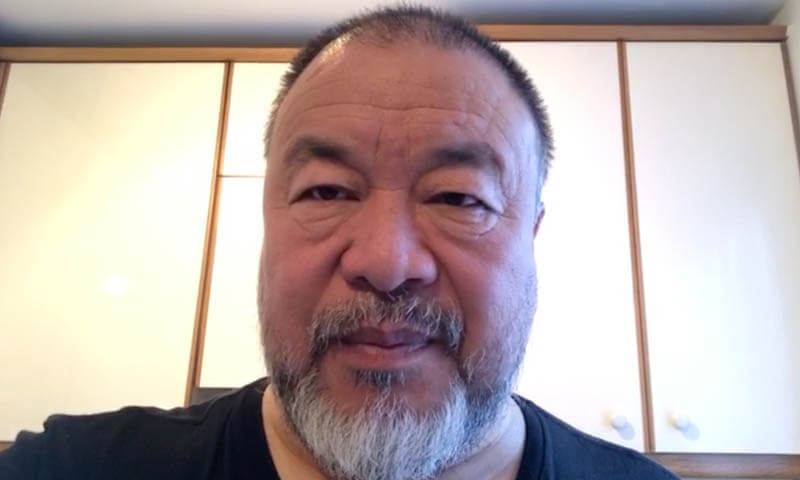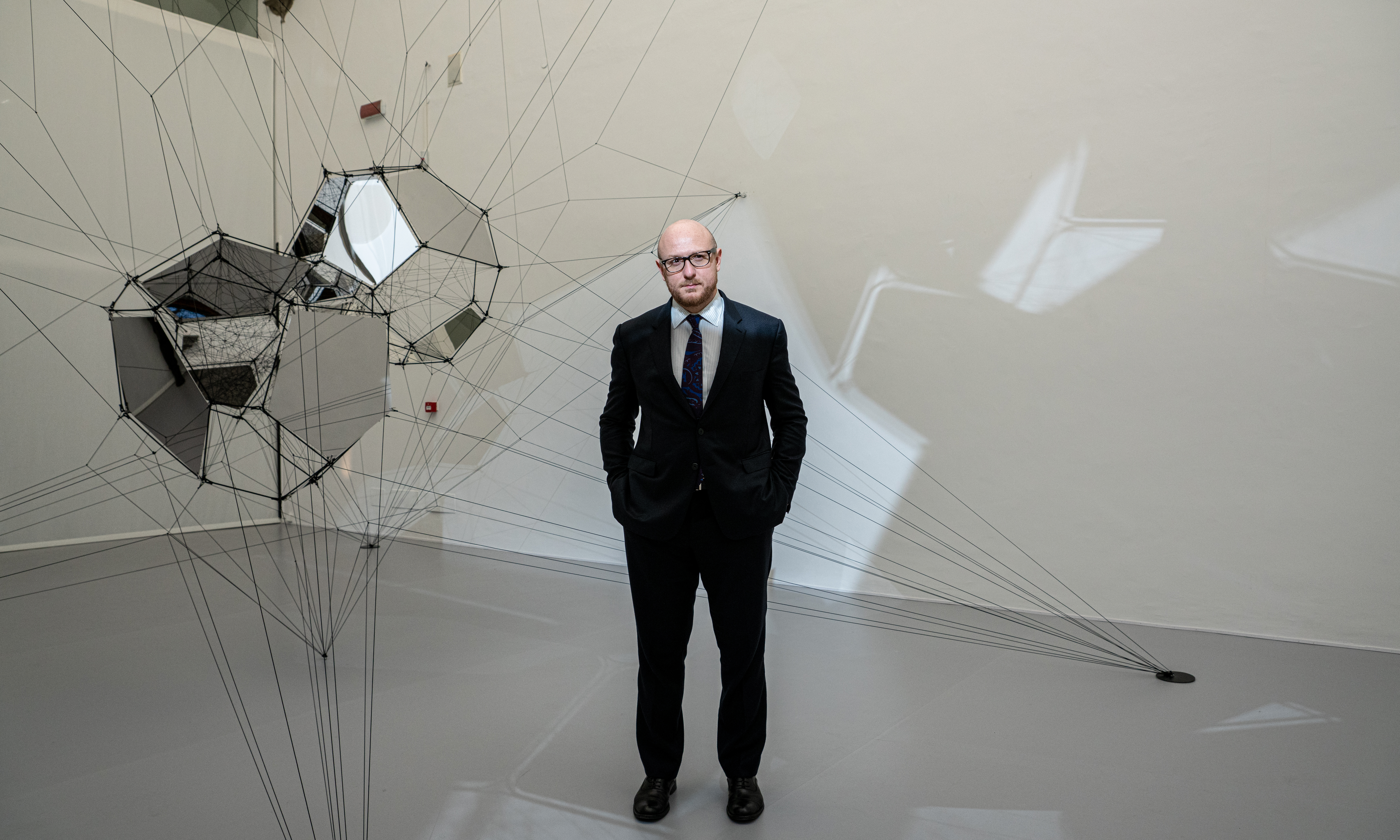by Arturo Galansino
Palazzo Strozzi, like any cultural institution that wants to speak to its own time, is committed to dealing with the most relevant issues of the present. Each contemporary art exhibition thus, becomes an opportunity to investigate the world in which we live through the sensitive gaze of the artists.
The exhibition Tomás Saraceno. Aria presents a series of imaginary and utopian ‘futures’ throughout our exhibition spaces – at once hypothetical and extremely true and present. These visions are of harmony and balance, a world in which connections are clear and cooperation is necessary.
Today, in light of the situation we are experiencing, the artist’s installations speak to us with an even greater strength and heightened awareness, their messages echoing through the empty rooms.
This moment of emergency leads us to reflect on our lifestyle, on the weight of our actions and on the fragility of our world. We are immersed in a hyper-connected reality, virtually and physically, and if we were to visualise our connections and social interactions or the routes of our movements we could effectively think about the image of a spider web. We are so much part of this structure that we do not even realize it, and we open our eyes only when it is threatened or runs the risk of breaking.
Today it becomes very clear that the hyperconnection and hypermobility associated with individualism have played a significant role in aggravating the situation we are experiencing.

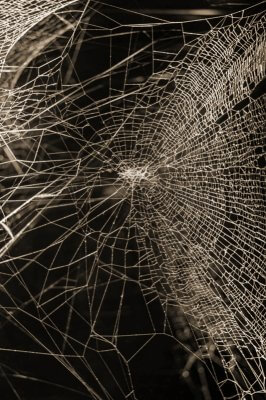
Tomás Saraceno, Aerographies (detail), 2020. Installation view of Aria, Palazzo Strozzi, Florence, 2020. © Photography by Studio Tomás Saraceno
Tomás Saraceno, Webs of At-tent(s)ion (detail), 2020. Installation view of Aria, Palazzo Strozzi, Florence, 2020. © Photography by Ela Bialkowska, OKNOstudio
According to the famous “butterfly effect”, coined in 1962 by the mathematician and meteorologist Edward Lorenz, the flapping of a butterfly’s wings in Brazil can cause a tornado in Texas. In more concrete terms, a small action can reverberate and cause far greater effects. So let’s think about the vibration of a thread, a simple touch. When this is connected to a larger structure, the whole system can vibrate, oscillate, break. If connections are threatened in any way, the damages to the entire complex can be enormous.
How can you exist in a balanced way in this hyper-connected reality? How can risks can be limited? The path indicated by Tomás Saraceno is one of harmony. In whatever future we want to live in, we humans must learn to live symbiotically with all other beings, living and non-living, human and non-human. The search for a dynamic balance must become our goal, our reason for being. To achieve this, it is necessary to cooperate, making individual gestures and actions that don’t betray the common good but move in a mutually beneficial, collective direction.
Some events can disturb the balance, threatening our world. In these cases everyone is responsible for helping to maintain the balance. Every action causes a reaction, be it good or bad. As in a close-knit orchestra, when each musician plays their part, the result is harmony: a unitary response made up of many individuals, distinct but united.
We have to be aware of our behaviors, our relationships, our movements, and the consequences they can have on others. This awareness must take place not only for our individual good, but for the good of everyone.
As in a spider web, we are small knots, part of an infinitely larger twine in which, through a chain of actions and reactions, each of our gestures makes the entire system vibrate. We must be conscious, and capable, of making it resonate in the most harmonious way possible. We must become a harmonious network in which each individual is an essential part.
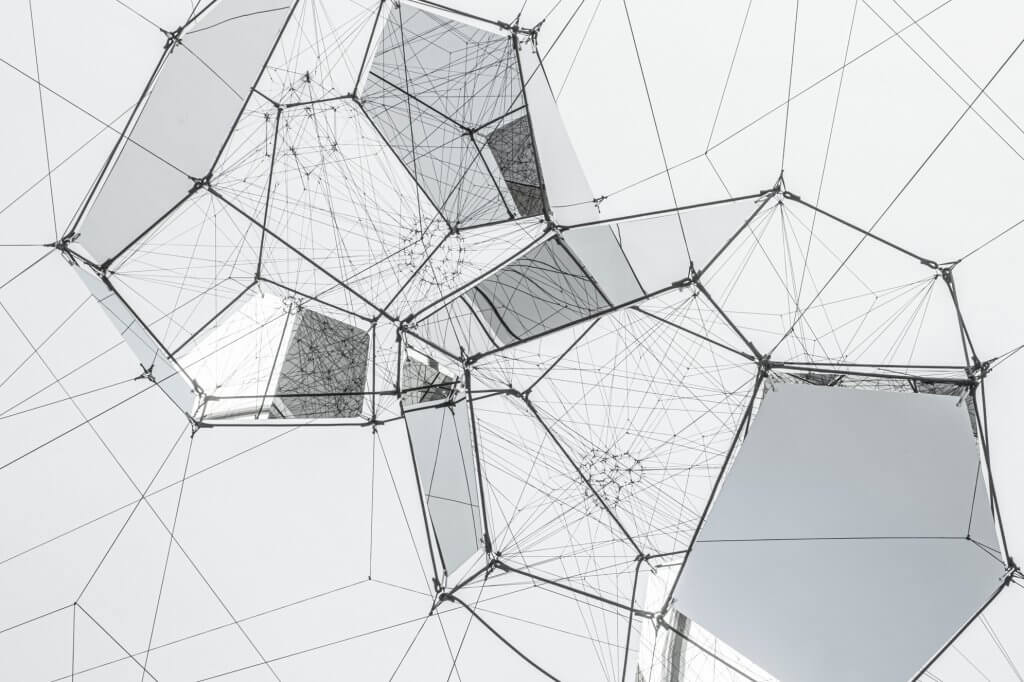
Tomás Saraceno, Connectome (detail), 2020. Installation view of Aria, Palazzo Strozzi, Florence, 2020. © Photography by Ela Bialkowska, OKNOstudio
In the coming weeks we will continue to champion these visions of a possible future reality outlined by Tomás Saraceno. We will do it in new ways, at a distance, hoping to stimulate a moment of reflection through the language we know best, that of art.
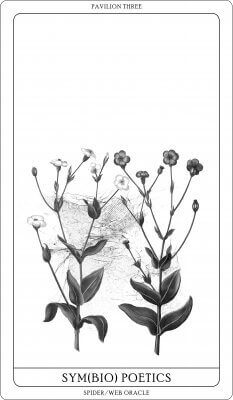
«Lamps and lightbulbs as allies in daily hunting,
bridging lifeways in entangled dependency.
Nature seems to elect relationships rather
than individuals, nothing makes itself alone.
Ask yourself how many multitudes you contain.»
SYM(BIO)POETICS: Card n.3 Arachnomancy
Tomás Saraceno, Arachnomancy Cards, 2019
Courtesy the artist. © Studio Tomás Saraceno, 2019
